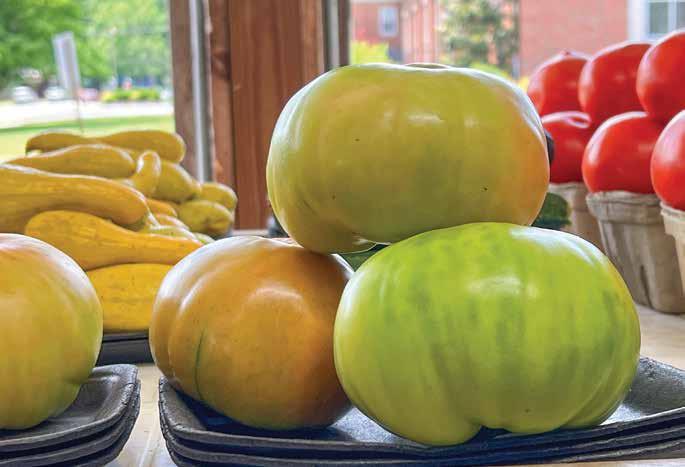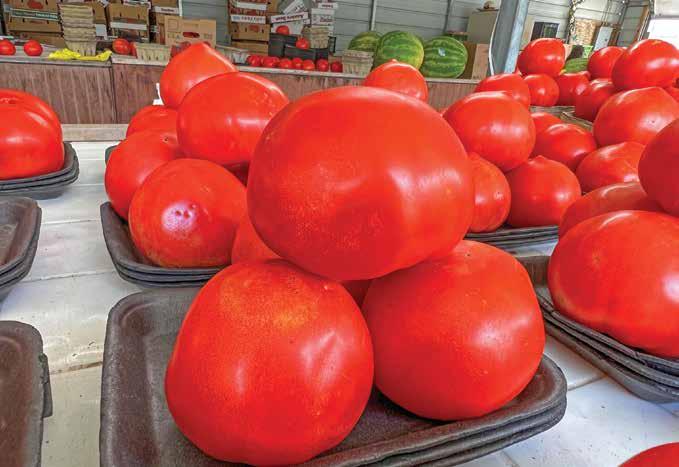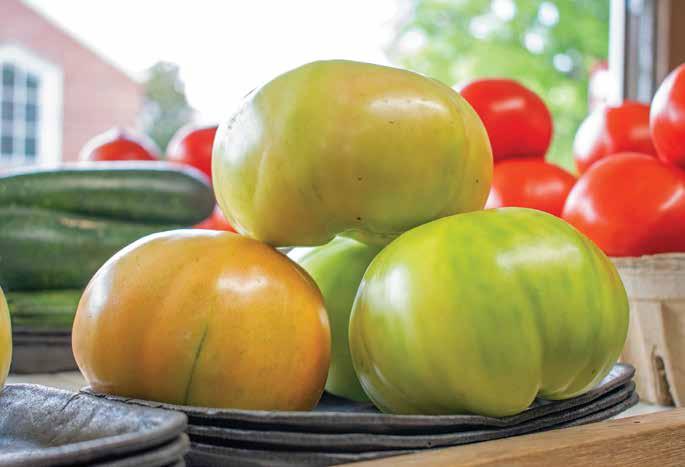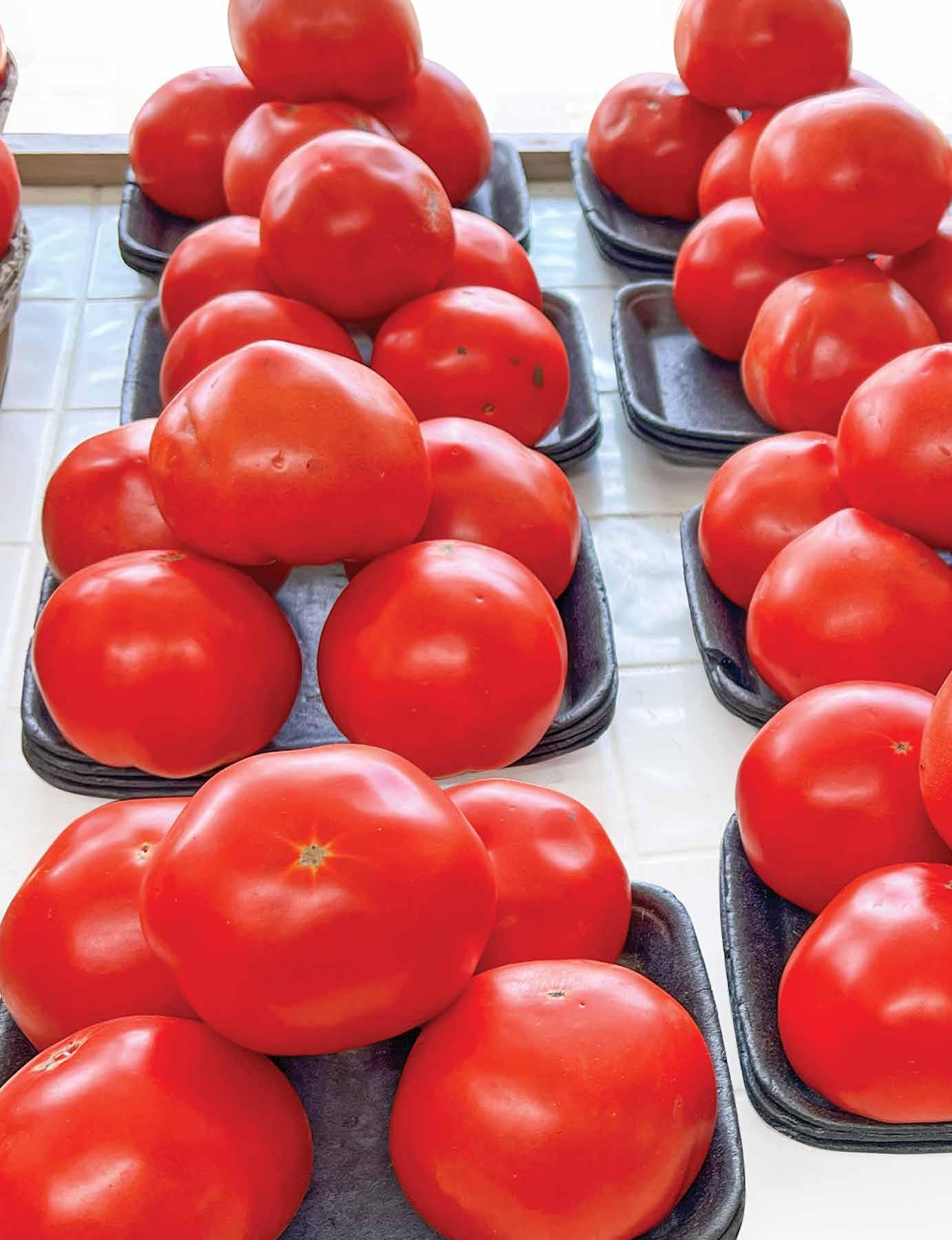
6 minute read
From the Extension
MASTER MATERS
with this information from the Franklin County Extension
Advertisement
Info from KATERNIA COLE COFFEY, Extension director Photos by MARÍA CAMP
For home farmers whose tomato crops are ripening and ready to harvest, here are some thoughts to bear in mind.
Health Benefits of Tomatoes
Tomatoes are packed with vitamins for good health benefits: • Vitamin C • Vitamin B6 • Vitamin A • Calcium • Fat-free • low in sodium
Making Tomatoes Even Tastier
Ingredients to add extra flavor to your tomatoes include olive oil, balsamic vinegar, white wine vinegar, basil, mozzarella, oregano, parmesan, feta cheese, arugula, garlic, thyme, dill, parsley, rosemary, onion, chives, marjoram, savory or tarragon.
Pickling Produce
Pickles add zip and zest to meals, snacks and party refreshments – if they are good pickles. They enhance the flavor of some foods that contain nutrients essential to good health.
Pickling is one of the oldest known methods of food preservation. The many varieties of pickled and fermented foods are classified by ingredients and methods of preparation. The four general classes are brined or fermented, fresh pack or quick process, fruit pickles and relishes. • ACIDITY: The level of acidity in a pickled product is as important to its safety as it is to the taste and texture. Do not alter vinegar, food or water proportions in a recipe or use a vinegar with unknown acidity. Acidity should be at least 5 percent. Use only recipes with tested proportions of ingredients. Good sources are the United States Department of Agriculture and the National Center for Home Food Preservation websites. You must have a minimum, uniform level of acid throughout the mixed product to prevent the growth of botulinum bacteria. • SELECTING PRODUCE: Use only good-quality produce. Select firm, ripe fruits. • SALT: Pure granulated salt with no non-caking material or iodine added is best. Pickling salt, sea salt fine grain and pink Himalayan fine grain salt can all be used and can be found with other salts at the grocery store or in the canning section. Iodine can cause pickles to darken, and non-caking material may prevent fermentation during the brining process and turn the brine cloudy. Refined table salt should not be used for brining. Never use ice cream salt or rock salt for pickles. • VINEGAR: Use a good-grade, 5-6 percent acid, 40-60-grain strength. Cider vinegar, used in most recipes, has a good flavor and aroma, but it might turn pickles brown. Distilled white vinegar is often used when a clear color is desirable.
• SPICES: Tie whole spices in a thin cloth bag; remove them before pickles and relishes are packed. Whole spices, if left in the jar, will not only darken the pickles but also could cause some off-flavor. Ground spices tend to darken pickles. Be sure to use fresh spices, ground or whole. Store spices in a cool place, about 70 degrees, in airtight contai• Iron ners. • Manganese • SUGAR: Most recipes use white granulated • Fiber sugar; however, some use brown sugar. If you • Potassium plan to use a sugar substitute, follow recipes de• Lycopene veloped for these products. Sugar substitutes are not recommended in pickling because heat and/ or storage may cause bitterness, and the sugar substitutes do not plump the pickles and keep them firm the way sugar does. • HARD WATER: Do not use hard water from the tap. Boil hard water in a stainless steel or unchipped enamel boiler for 15 minutes and remove from heat. Cover and let sit for 24 hours. Remove any scum that might have formed. Slowly pour water from the container so sediment will not be disturbed. Discard sediment. Water is now ready to use.
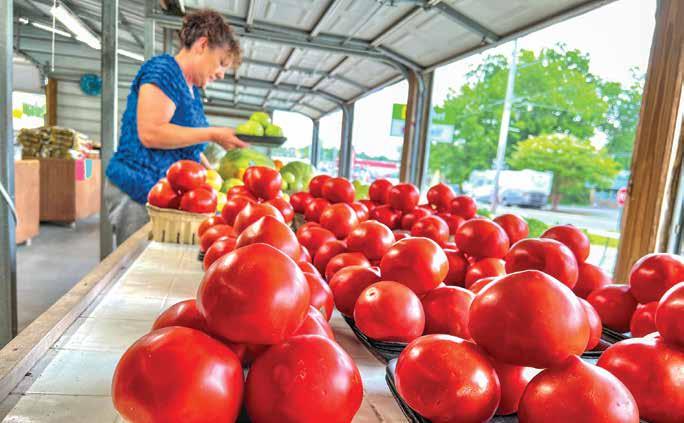
A Later Crop
For those contemplating a late planting, here are some tomato-growing tips to keep in mind. With all the tomato varieties available, deciding which ones to plant can be fun yet confusing. The Alabama Extension has conducted many tomato programs over the years and included a tomato taste test as part of the program. Choosing which variety can be overwhelming, but a few new cultivars might be worth a try.
Tomato Growth Habit
Tomatoes are categorized into two groups depending on their growth habit: determinate and indeterminate. A determinate plant will grow until a certain point, and the terminal buds will produce

flowers instead of more vegetative growth. Determinates will produce fruit and then stop producing after a few weeks. They can produce some fruit later in the season but not as much as the indeterminate plants. For this reason, many determinate plant growers will plant tomatoes later in the season if they are looking for a later crop. The indeterminate plants can be more of a challenge to stake but will produce fruit all season if disease issues are managed properly.
Tomato Acidity
Many people will refer to tomatoes as being high acid or low acid, but most tomato varieties have relatively the same acidity. It is actually the sugar content that varies with different tomatoes. Therefore, a “high acid” tomato would actually be a low sugar content tomato. A “low acid” tomato would have a higher amount of sugar.
As a general rule, high sugar content tomatoes are typically not red in color; rather, they are shades of orange, yellow or purple.
Fruiting Determined by Temperatures
Hot summer temperatures can impact fruit set for tomato plants. Not only are high daytime temperatures a problem, but high nighttime temperatures can cause a reduction in fruit set, as well. Thankfully, heat set tomatoes will set fruit at higher temperatures. Heat set tomato variations include Bella Rosa, Florida 91, Phoenix, Redline, Solar Fire, and Sun Leaper.
Diseases
When deciding which tomato to grow, disease resistance is an important factor. No tomato is resistant to all diseases. You will have to choose resistant varieties based on the most problematic diseases in your garden.
It is pretty common to find tomatoes resistant to Fusarium Wilt, Verticillium Wilt and Root Knot Nematodes, as well as several varieties resistant to Tomato Spotted Wilt Virus. However, it is also possible to find a few tomato cultivars resistant to Early Blight, Late Blight, Gray Leaf Spot, Tomato Mosaic Virus, Tobacco Mosaic Virus, Bacterial Speck, Bacterial Wilt and a few other diseases. Again, you will not find a tomato resistant to all of these diseases; however, you can find tomatoes resistant to one or more.
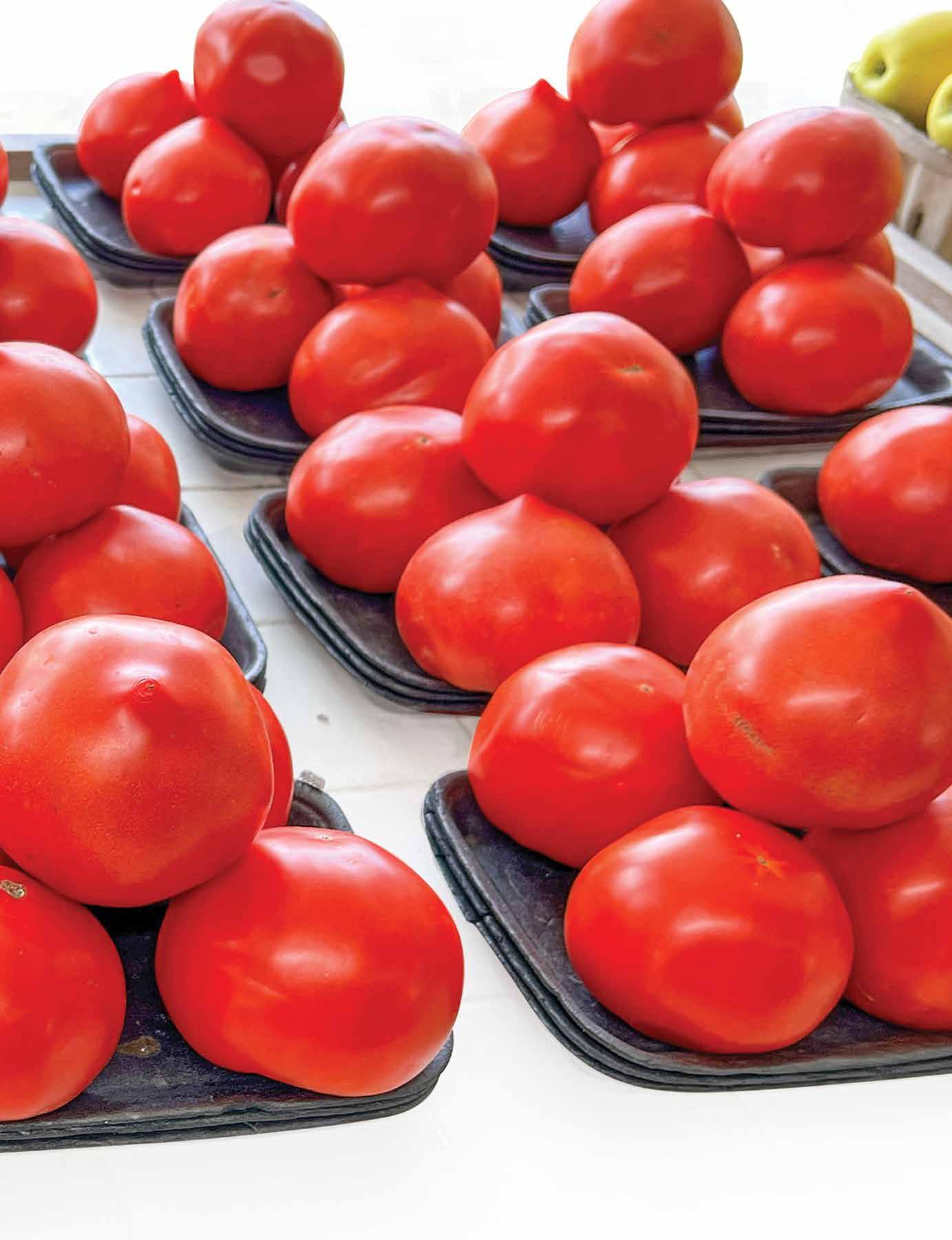
Use of the Tomato
There are several different uses of a tomato to consider before planting.
If you are planning on canning tomatoes, the paste type, Roma type, tomatoes are a good option. Popular paste tomatoes include Granadero, Mariana, Plum Crimson, Plum Regal and Pony Express.
Slicing tomatoes, grape tomatoes and cherry-type tomatoes are available and are favorites among producers. Recommended slicing tomatoes with good disease resistance include Amelia, Bella Rosa, Crista, Mountain Gem, Mountain Magic, Mountain Merit, Red Bount and Red Defender. There are thousands of other slicing tomatoes available.
Cherry types include Matt’s Wild Cherry, Mountain Belle, Sun Gold, Sun Sugar and Super Sweet 100. Recommended grape types with good disease resistance include BHN 410 and Mountain Honey.
Planting Location
Many farmers grow tomatoes in high tunnels and greenhouses. There are recommended tomato cultivars for high tunnel production and tomatoes for greenhouse production as well. If you want to try some of the tomato cultivars and are struggling to find them at garden centers, planting seeds might be the best option.
Contact the local Extension office for more information on recommended tomato cultivars or growing tomatoes from seeds. A vegetable planting guide with recommended planting dates can be found on the Alabama Extension website, www.aces.edu, or by contacting the Franklin County Extension at 256-332-8880.
